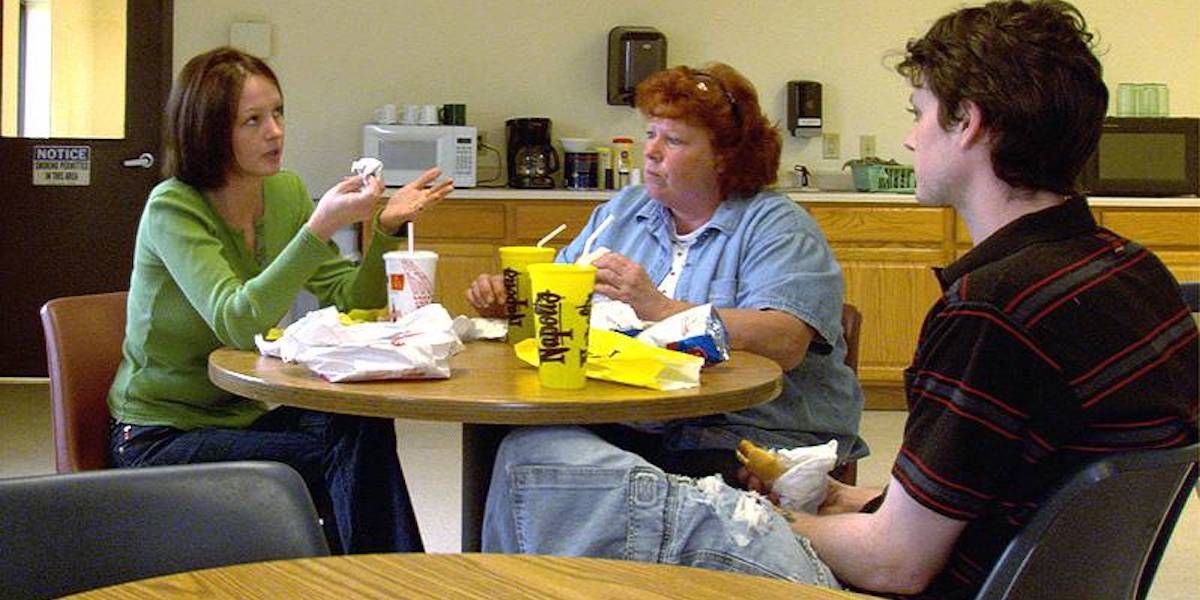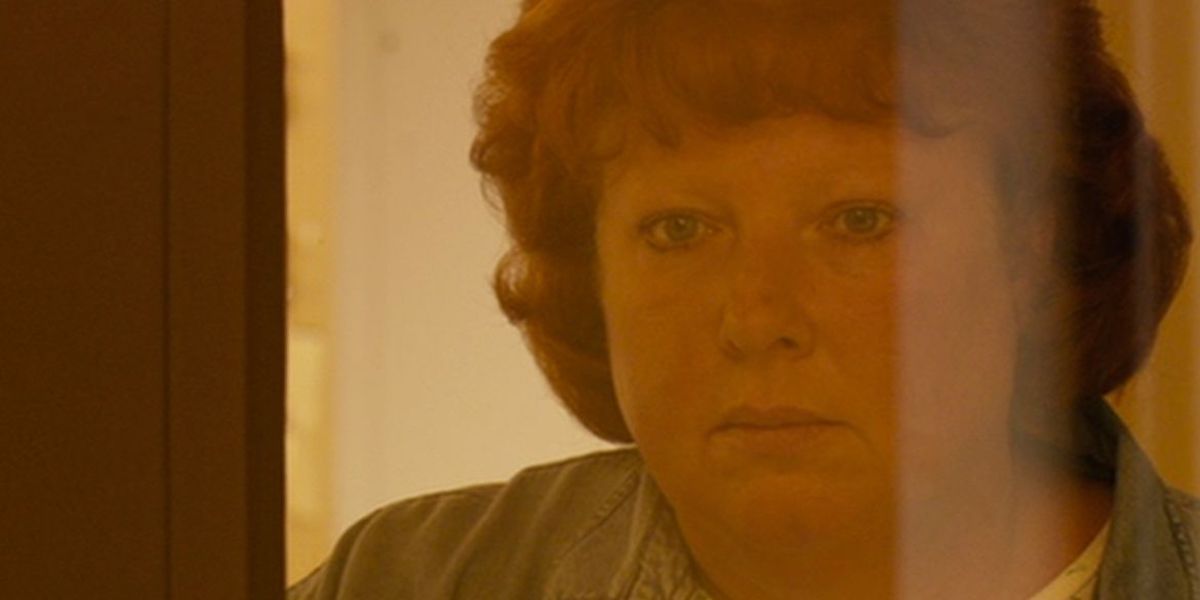Steven Soderbergh certainly likes to experiment. Looking through his filmography reveals a selection of films so disjoined in genre and style that it’s hard to believe it’s all the work of one man. Nestled between his commercial crowd-pleasers like Out of Sight and the Ocean’s Eleven trilogy lies a selection of films so diverse it rivals Takashi Miike for the most idiosyncratic filmography in cinema: from horror like Unsane to comedy like Schizopolis, sci-fi like Solaris to biopic like Erin Brockovich, in addition to countless thrillers and crime dramas that he churns out on an almost yearly basis, it seems that musical is the only genre Soderbergh has yet to tackle (although he has skirted around its foundations with Magic Mike). That he succeeds at tackling all of them is impressive in its own right, but that he’s also able to infuse every one with that distinctive Soderbergh feel even while employing such eclectic styles of filmmaking is remarkable. There’s no other director in Hollywood quite like him, and cinema is a richer and fuller medium with him in it.
Given that his filmography currently sits at 28 feature films (plus a few endeavors into the world of television), it’s not surprising that a few would fall into obscurity. The most noteworthy example is Bubble, his 2005 drama that saw him throwing aside his sixteen years’ worth of finely tuned talent for the most restrained film of his career. Released between Ocean’s Twelve and The Good German, the film came and went with barely a blip, and these days earns little more than a passing mention in discussions of Soderbergh’s career. It’s easy to see why, given that Bubble relies entirely on unknown actors with a style so stripped-down it feels like the work of a first-time director cobbling together a film from whatever they have to hand rather than the fifteenth film from an Academy Award-winning director. In many ways it feels like a return to his roots, conjuring memories of his quickly produced debut Sex, Lies, and Videotape which made him the poster child of the independent scene. Given his subsequent rise which saw him directing some of the most prominent films of his era, it’s probably not surprising that he would want to take a vacation from the glitz and glamor of Hollywood for a decidedly more straightforward venture. Bubble may not have left an impact like his other films, but the use of such a minimalistic style from such a high-profile director makes it a fascinating watch, and its success cements Soderbergh as one of the greatest filmmakers of his generation.
As with every aspect of the film, Bubble’s story is very much on the simple side. Centered on an unnamed town somewhere in the Ohio wilderness, the film follows two employees at a doll factory whose lives are thrown into turmoil when a new worker is hired. Martha (Debbie Doebereiner) is a middle-aged woman who has little social contact outside of her job. Her only friend is Kyle (Dustin James Ashley), an introvert in his early 20s who appears uneasy with how much affection Martha shows him. When the factory hires Rose (Misty Dawn Wilkins), a woman struggling to raise her young toddler, Kyle is immediately drawn to her. The two grow close and eventually go on a date, with Martha growing increasingly jealous of the attractive young woman who is ‘stealing’ away her closest friend. Tensions rise and lines are crossed, culminating in a final act so dour it makes the opening look like paradise in comparison. Anyone who likes a happy ending should stay far away from Bubble, but for everyone else there’s a lot to admire in what is undoubtedly one of the most engrossing depictions of working-class life ever put to film.
The best way that Soderbergh shows this – and indeed, the greatest strength of the film in general – is with its actors. None of its central trio are professional actors, instead being residents of the city of Belpre where the film was shot. Doebereiner was a manager at a local KFC, for example, while Wilkins was a hairdresser. It doesn’t take a seasoned critic to deduce that this team of first-time actors probably won’t give the best performances you’ll ever see, which is exactly what happens. Stilted line deliveries and awkward body language make their presence known in every scene, and while this can make for some cumbersome viewing at points, that’s exactly the point. What they lack in technical finesse they make up for with stone-cold believability, giving the film the impression of a fly-on-the-wall documentary rather than a narrative drama. Their years (and in some cases, decades) of living life at the lower end of the social chain comes through in their performances, allowing them to present an authentic representation of everyday life in a way that a major Hollywood celebrity could never replicate.
The decision to use improvised dialogue adds to this feeling, with the actors being given full rein over their character’s voice and personality while adhering to a rough template provided by Coleman Hough, who previously wrote Soderbergh’s 2002 comedy-drama Full Frontal. Giving away control of such a vital element of filmmaking to a group of people unfamiliar with the nuances of writing could have been disastrous, but these actors bounce so effortlessly off each other it’s like they’ve been colleagues their whole life. Watching them interact on their lunchbreak, eating the same fast food at the same table day after day, conversing about banal topics like their previous jobs and what they’re going to do when they get off work (usually either sleeping or working at their second job), hits so close to reality you begin to feel like a voyeur spying in on other people’s lives. One of their lunches is spiced up by the knowledge that they’ll be getting a $50 bonus if they complete their quota for that week, but the excitement is quickly nurtured when all of them realize they have no idea what they’d do with that kind of money. Just reading about it might make it sound incredibly boring, but there’s a strangely hypnotic power to these scenes that few dramas can match.
The absence of overwritten dialogue allows Soderbergh to shine a spotlight on just how scripted even the most basic conversation in a traditional film is, giving the film a distinctive feel even while telling a conventional story. There’s a refreshing plainness to Bubble, with events simply happening without anything shining a spotlight on all of the important bits we’ll need for later. For example, the resentment Martha feels towards Rose is not conveyed via emotional speeches or grand Aaron Sorkin-esc dialogue, but through blank stares and minute gestures. The bulk of their exchanges are just polite conversations, with Martha burying her hate so deep behind the mask of pleasantness that anyone who’s had to interact with someone they dislike over an extended period will be able to relate. When Martha realizes that Rose’s date is Kyle, her reaction gives no indication that she cares one way or the other. Later on Martha stops by a restaurant and has a pizza, and the shot of her eating alone as the city gives way to the night is one of the loneliest images in cinema.
The simple but powerful nature of the shot is a good segway to discuss Soderbergh’s directing. Continuing with his career-long experimentation with cinematography, Soderbergh opts for a cheap HD camera that makes Bubble look like an amateur home movie rather than a major production. It gives the film an intimacy that complements its characters, enhancing its earnest glimpse into their lives without ever glorifying the situation they’re in. Master shots dominate the coverage, allowing the performances to dictate the flow of scenes rather than editing. For most of the film the camera is locked in place, with Soderbergh shooting everything from the dilapidated houses to the vacant sidewalks with an uncomfortable stillness that accentuates the ever-rising anxiety. It’s a style evocative of minimalist cinema's greatest auteurs such as Yasujirō Ozu and Robert Bresson, the latter of whom had a famous disdain for acting. Soderbergh appears to have taken those lessons to heart, and by removing artifice from the equation with both the way he captures his actors and also the performances themselves, he’s able to make his depiction of the underprivileged all the more impactful.
While most of Bubble focuses on small-scale conflicts that all of us will experience in daily life, the film does take a step into the world of criminality for its final act. How it does so is best left unspoiled, although even a half-asleep viewer sprawled out on their couch should see the twist coming a mile away. It isn’t supposed to be Soderbergh’s attempt at dethroning M. Night Shyamalan as the king of plot twists, but rather serves as the ultimate reinforcement of the film’s central theme. This is an attempt at the criminal life by someone who thinks watching a few true-crime documentaries is all they need to become the next D. B. Cooper, failing to realize that they have none of the finesse needed to get away with it. Soderbergh avoids the temptation to introduce a grizzled police officer who spends their life at the bottom of a glass, and who engages in lengthy scenes pouring over evidence while their target remains forever one step ahead. Instead the culprit is caught almost immediately, apprehended by the use of facts so obvious it makes their capture less of a victory for the morally righteous and instead just plain old pathetic. It might not sound exciting, but seeing such a realistic depiction of police work in a medium that has thrived off such a sensationalized version makes for an enthralling (and refreshing) watch.
By the time the credits roll our characters have regressed so far past the low point they were already at that many viewers will be left wondering what the point of it all was. The answer is simple – because that’s what the world’s like. Real life doesn’t operate under a three-act structure where everything is wrapped up in a neat little package by closing time, but instead is just a continuous series of events whose consequences we have to live with for decades to come. In a time when every piece of news feels like another nail in our planet-sized coffin, why would anyone want to watch a film as downbeat as this? Because doing so can teach us a lot about ourselves, the people we interact with, and movies in general. It’s only when watching a film like Bubble that you realize just how fictitious a normal film is, and while such things do lend themselves well to storytelling and basic entertainment, the occasional deviation can make for a truly spellbinding experience. The simplest techniques are often the most effective, and by crafting the film around this belief without letting the shadow of his Hollywood successes taint his approach, Bubble can easily count itself amongst the best films of Soderbergh’s career.
"Hollywood" - Google News
August 20, 2022 at 01:15AM
https://ift.tt/xMgAD8e
How Steven Soderbergh's Bubble Subverts Hollywood Glamour - Collider
"Hollywood" - Google News
https://ift.tt/OliustN
Shoes Man Tutorial
Pos News Update
Meme Update
Korean Entertainment News
Japan News Update
Bagikan Berita Ini

















0 Response to "How Steven Soderbergh's Bubble Subverts Hollywood Glamour - Collider"
Post a Comment